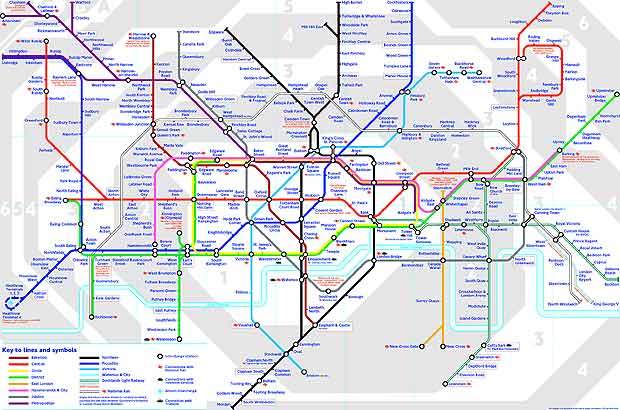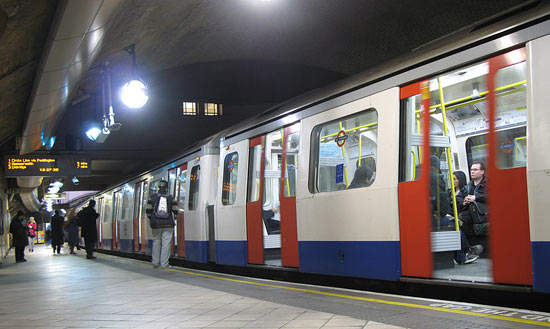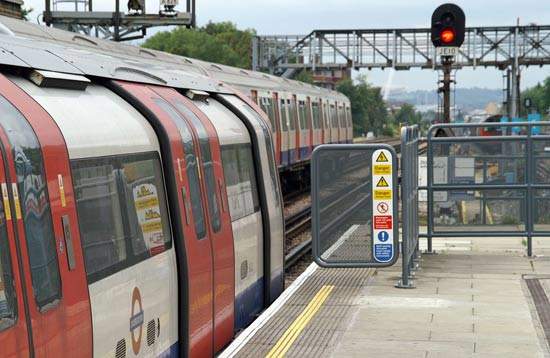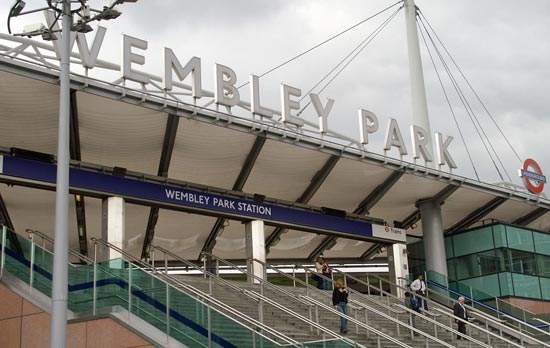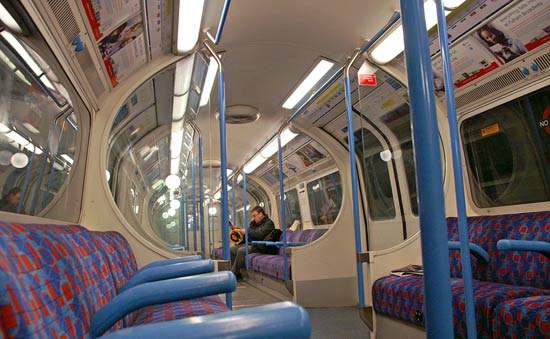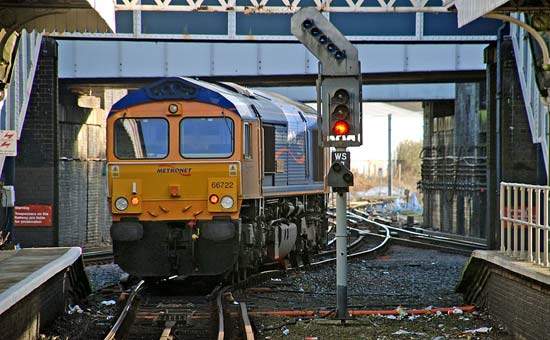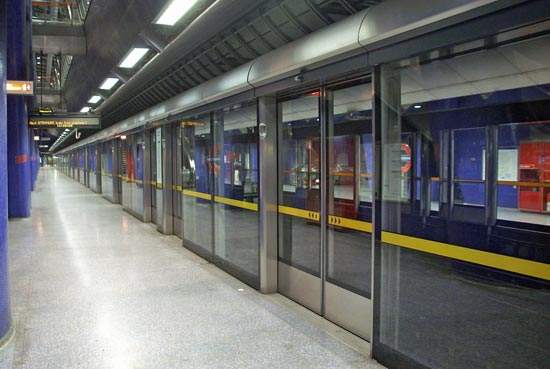Generically referred to as ‘the Tube’, London is the oldest and remains one of the largest metro systems in the world, carrying over one billion passengers a year. The system runs 54% on the surface, the remainder being a combination of sub-surface and later deep-level tube lines.
Initiated and mostly built by private enterprise in the late 19th and early 20th centuries, for much of its history it has been in public ownership. By most standards for key infrastructure in developed countries, it had been subject to under-funding for many years.
When the Labour Party came to power in 1997, it chose a Public Private Partnership (PPP), under which private companies would help to finance regeneration in return for lengthy maintenance/management contracts and guaranteed returns.
Created as an integrated body responsible for the capital’s transport system in 2000, Transport for London (TfL) took over LUL responsibility in 2003. Train operation was to remain a public sector responsibility under London Underground (LUL).
Two new infrastructure companies (infracos) were formed. Tube Lines, jointly owned by Bechtel and Amey (Ferrovial) won a 30-year contract for infrastructure maintenance and upgrade of the Jubilee, Northern and Piccadilly lines. The other was Metronet, a holder of two contracts; the BCV (Bakerloo, Central, Victoria and Waterloo & City lines) and the SSL for sub-service lines: the District, Metropolitan, Circle, Hammersmith & City and East London.
However, the decision to contract out Underground improvements has not proven to be wholly successful. Both Metronet companies entered administration in July 2007, although Tube Lines has continued to function.
Even though some projects have fallen behind schedule, overall the network continues to be improved, with the Central Line named Best Railway in London at the annual National Rail Awards in September 2006 for its reliability and high levels of customer satisfaction.
The project
“Major works include upgrading more than 50 stations as part of a £5bn investment over five years by Transport for London.”
With early priorities to improve reliability and cut delays, with around £16bn of investment promised by Government and the infraco consortia over the 30-year term: £4bn from the private sector, £5bn from farebox and retail revenues and £7bn from the taxpayer.
The Underground is being upgraded to improve its appearance and performance, notably in respect of capacity. Extra stimulus and resources resulted from London being awarded the 2012 Olympics. Major works include upgrading more than 50 stations as part of a £5bn investment over five years by TfL.
Construction of Terminal 5 at London Heathrow airport has seen the Piccadilly Line become the subject of major engineering works to incorporate the new terminal. Handed over in July 2007 in advance of Terminal 5 opening in March 2008, the new line has been fully funded by a BAA subsidiary as part of the £4.3bn development.
Infrastructure
Tube Lines is putting all its contracts out to open tender, for which the two shareholders are able to bid against other companies.
Improvements to stations include replacement or refurbished lifts and escalators, regular ‘deep cleans’ and a complete rebuild of Wembley Park station to serve the new Wembley Stadium that opened in 2007.
Metronet carried out much of the work itself, with investment from the five partners. The contract called for track, points and crossings to be renewed, along with a comprehensive upgrade of all civil assets in the first 15 years, including 4,800 bridges, 1,600 structures and buildings, 130km of tunnels, 155km of embankments, 225km track drainage and 150 stations. One of the major projects, covering the Victoria Line upgrade, is due for completion in 2013.
During 2006, major works at stations and in tunnels to be tackled by Metronet and Tube Lines included Kings Cross, St Pancras, Embankment and Earl’s Court.
Renovation of the Waterloo and City saw it close from April to September 2006 for the line to be fully relaid, refurbishment of the train fleet, installation of CCTV and new electrical and communications equipment.
Rolling stock
The major part of the £3.4bn contract awarded to Bombardier in April 2003 covers the supply of 1,738 cars for the sub-surface and Victoria lines between 2008 and 2015, all to be built at Derby.
In total, 47 eight-car Movia 248 trains (part of the Bombardier Movia Metro family) will be built for the deep-tube Victoria Line. The first pre-production prototype cars began testing in Derby before test operation on the route in 2007. The Northumberland Park depot is being modernised to handle the new ‘2009 Stock’ of which, once accepted, one train will leave the assembly line every 15 days until August 2012.
Improved acceleration and braking will shorten journey times and allow a planned increase in frequency on the Victoria Line from 28 trains per hour to 33. The Bakerloo Line will have to wait until 2019 for new trains.
For the larger loading gauge Sub-Surface Lines (SSL), 190 Movia 237 trains will replace older stock on the Metropolitan, District, Circle and Hammersmith & City lines. Two prototypes on the ‘Met’ will have to run 40,000km – both empty and in traffic – to ensure they are fit for purpose.
In the meantime, 75 six-car District Line trains, the last of existing stock to be replaced, are being refurbished to work until the early part of the next decade.
The Jubilee Line, which will take a large share of the Olympics-generated traffic to the main site at Stratford, has already benefited from additional carriages in January 2006, increasing train lengths from six to seven cars.
Signalling and communications
Much of the signalling is old and had become unreliable. The infracos pledged to upgrade all equipment, with Westinghouse named as Metronet’s sub-contractor for signalling, worth around £850m. Around 75% of LUL control equipment is Westinghouse and the company has been a supplier to the Underground for over 50 years.
The Metropolitan Line is the first to receive the Tetra Motorola radio system on 56 trains (at a cost of £1.2m) to improve communications with increased reliability, better transmission quality and extended capability. The same system could be added to Circle and District Line trains.
Promising greater line capacity is the introduction of moving block signalling, this feature alone making it possible to increase passenger numbers by 20%.
The future
In 2007 TfL took over several heavy rail routes, notably the North London and Euston-Watford ‘dc’ lines, creating the new Overground brand and leading to a greater degree of integration with Underground operations, notably by extending use of Oyster stored-value ticketing and cross-promotion of the systems. The Underground relinquished the East London Line, closed in December 2007, to the new TfL format, London Overground. It is scheduled to reopen in its new guise during 2010.
Approval of two heavy rail schemes crossing London west to east (Crossrail) and north to south (Thameslink) in 2007 should greatly assist the operation and free up capacity of several Underground lines. Crossrail in particular should reduce interchanges with Underground lines at the Paddington and Liverpool Street termini, with new Crossrail stations in central London obviating the need for many to use Underground services at all.
By 2010, Tube Lines should have upgraded 24 Jubilee Line stations, replaced over 16km of track and repaired 5km of drainage.
“By 2020, TfL expect annual Tube journeys to increase from the current approximate 1 billion to 1.5 billion.”
By then, the Northern Line, oldest of the tube lines and a highly complex operation due to its branching layout, should have had 38 stations upgraded, delays cut, 24km of new track and over 6km of drainage replaced. A year later a new signalling system should improve journey times by 18%, with real-time train running information on stations and trains.
Also under the management of Tube Lines, the Piccadilly Line’s major upgrade, including new trains, new signalling and control centres, should be completed by 2014.
In February 2008 a total funding for TfL of £39bn until 2017/18 was confirmed by the Department for Transport, and a transfer of Metronet to TfL was anticipated. By 2020, TfL expect annual Tube journeys to increase from the current approximate 1 billion to 1.5 billion.




